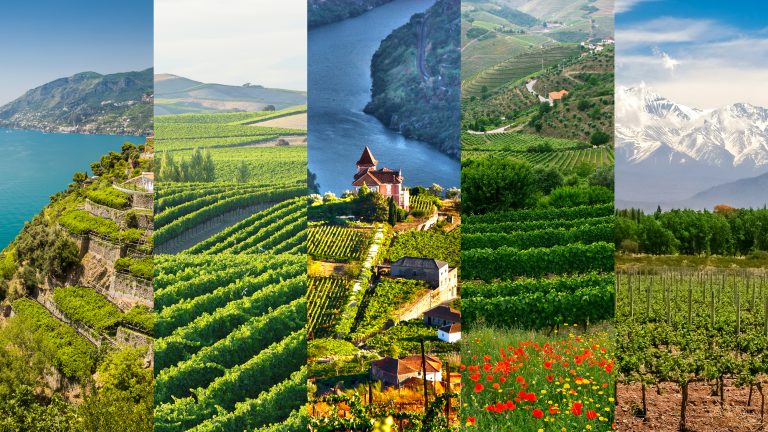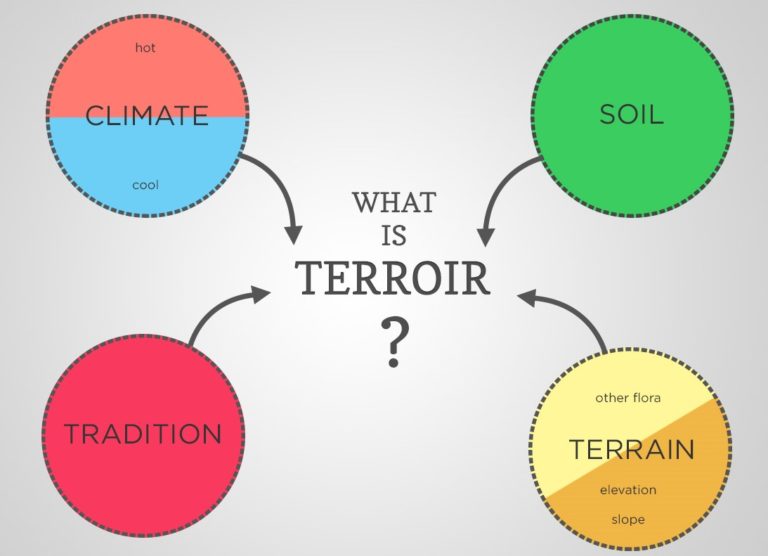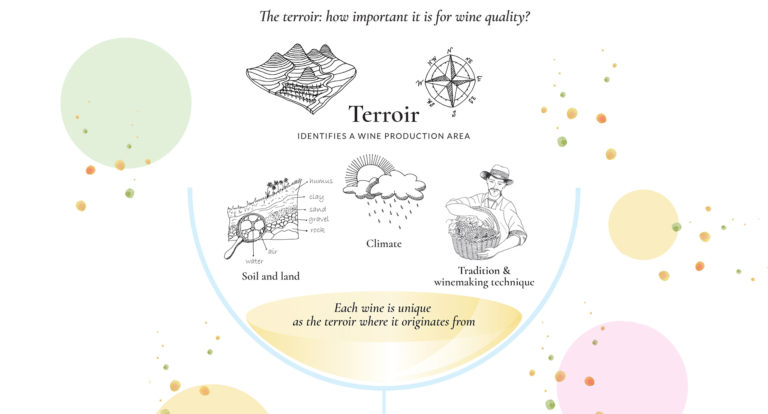
Don’t they always?
Thank goodness for the people of France and their unending ability to orchestrate a large, complex group of concepts into one single word. In this case that word is – TERROIR.
Terroir is perhaps the most important, yet least understood, word in the vocabulary of wine. You see, we Americans tend to think of wine as a commodity, like gold, salt or cotton. But at its core wine is simply a bi-product of agriculture. The characteristics of the fruit used in making the wine results in 90% of what you ultimately perceive as its quality.
What is Terroir
Terroir is the set of environmental factors that affect the inherent qualities of the grapes, when the crop is grown in a specific habitat. These factors may include weather, soil composition, latitude, elevation, sun exposure, and proximity to bodies of water.
This is not surprising given what we already understand about agriculture. Certain plants thrive in specific regions. Apples in New York, avocados in California, peaches in Georgia, pineapples in Hawaii and, oh yes, oranges in Florida. In each case the terroir of each region contributes to the excellence of the fruit.
Here’s a little example of nature’s influence on grapes. The Pinot Noir grape originates from the Burgundy region of France. The people of that area grow virtually no other red grape. Many consider Burgundian Pinot Noir grapes to be the finest in the world. However, a major competitor to Burgundy is the Willamette Valley in Oregon. They too produce superior Pinot Noir. Now, if you place your finger on a globe at the Burgundy Region and follow the latitude around you will land in (you guessed it) the Willamette Valley.
You see, nature knows best.

Terroir – The Next Step
In a broader sense the word terroir may be used to reflect the culture and wine making methods used in a geographic region. Such factors may then include pruning, irrigation and processing techniques like crushing, pressing, aging containers and length of aging time.
Here is an example. French winemakers primarily age wines in oak barrels manufactured from trees grown in central France include Allier, Limousin, Nevers, Tronçais and Vosges. American barrels are made from white oak grown mainly in California, Minnesota and Wisconsin. Italians use Slavonic oak barrels, called barriques, which are produced from trees of the north-eastern plains of Croatia. Each type of oak impacts the wine with its own unique flavor characteristics.
The Importance of Terroir
You may be forgiven if all of this is a bit overwhelming and more than you wish to know. But terroir impacts every single wine purchase you make. So, you might want to pay a little attention here.
If the terroir impacts the flavor characteristics of wine, then identifying the terroir will help you make wiser and more effective purchasing decisions. If you find a vintage you like, you might consider other wines from that area. Believe it or not, this is a much more prudent method of assuring your satisfaction than depending on any set producer or brand name.
You see producers make wines from many different terroir. Pinot Noir from one region may taste dramatically different that one another from a different area. Now, terroir may reflect the nature of a very small, unique area. For instance, Howell Mountain and Rutherford are both located in Napa, but the Cabernet from each taste quite different. If you buy a Robert Mondavi Napa Cab it will likely be very different than a Robert Mondavi Howell Mountain Cabernet.

Appellation
A wine’s region of origin is called its appellation. That’s where the grapes are grown. In the USA they are called American Viticultural Area (AVA). But grapes can be shipped by companies to differing locations for production. To improve purchasing, focus on the appellation specified on the label. The more limited the area the more specific the terroir.
Each appellation will reflect the characteristics of its terroir. Now the wine will more likely be akin to that which pleased you in the past. You don’t have to know what factors contribute to each area of terroir or even the names of all appellations. Just remember the ones you like, and you’ll have greater success and wine enjoyment.
